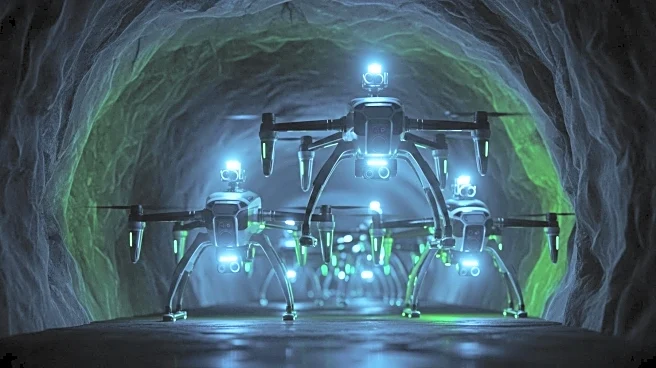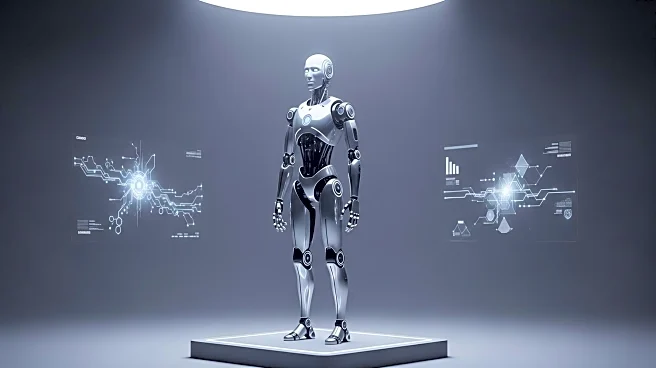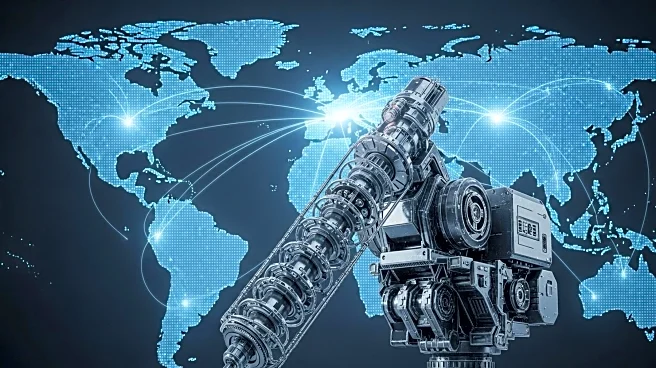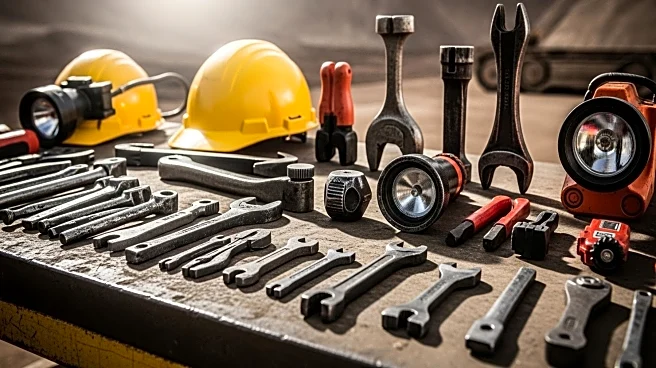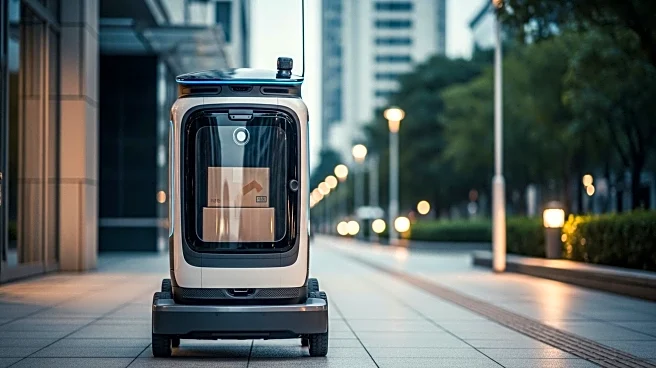What's Happening?
Underground exploration has historically been fraught with challenges due to safety risks and the complexity of subterranean environments. As demand for critical raw materials increases, mining operations are shifting towards deeper and less accessible sites. Autonomous multi-robot systems are emerging as essential solutions to these challenges, enhancing safety, efficiency, and scalability in mining processes. These systems consist of specialized robots that collaborate to perform tasks such as navigation, mapping, infrastructure deployment, material transport, and precise drilling. By replacing humans in hazardous roles, these robots improve safety and allow continuous operations, boosting productivity. The systems utilize Hierarchical Finite State Machines (HFSMs) for task coordination, enabling dynamic task allocation and adaptability to changing environments.
Why It's Important?
The adoption of autonomous multi-robot systems in underground mining represents a significant shift towards automation and digital transformation in the industry. These technologies lower barriers to accessing previously unreachable mineral deposits, potentially extending mine lifespans and increasing resource yields. The ability to operate in abandoned or unstable mines offers opportunities for revitalizing declining mining areas. Additionally, these systems can lead to environmental and financial benefits by reducing waste and minimizing environmental harm. Improved operational efficiency and lower accident rates contribute to cost savings, making extraction projects economically viable even in challenging conditions. The shift in worker roles from on-site tasks to remote monitoring and robot maintenance reduces risks and allows focus on creative decision-making.
What's Next?
Despite advancements, challenges remain in enhancing robot autonomy in unstructured environments. Improving artificial intelligence for perception, mapping, and decision-making is crucial. Collaboration among robotics engineers, mining experts, and software developers is essential for progress. Standardizing communication protocols will enhance interoperability between robotic platforms. As these systems become more common, ongoing deployments will provide valuable insights, gradually making them indispensable tools for underground exploration. Future developments in energy storage and power systems will further improve robot reliability and operational duration.
Beyond the Headlines
The integration of autonomous multi-robot systems in mining could lead to long-term shifts in industry practices and worker roles. As robots take on more tasks, human workers may focus on strategic planning and creative problem-solving, potentially leading to a more skilled workforce. The environmental benefits of targeted extraction and reduced waste could contribute to more sustainable mining practices. Additionally, the economic viability of mining projects in challenging conditions may encourage investment in technology-driven solutions, fostering innovation in the sector.

